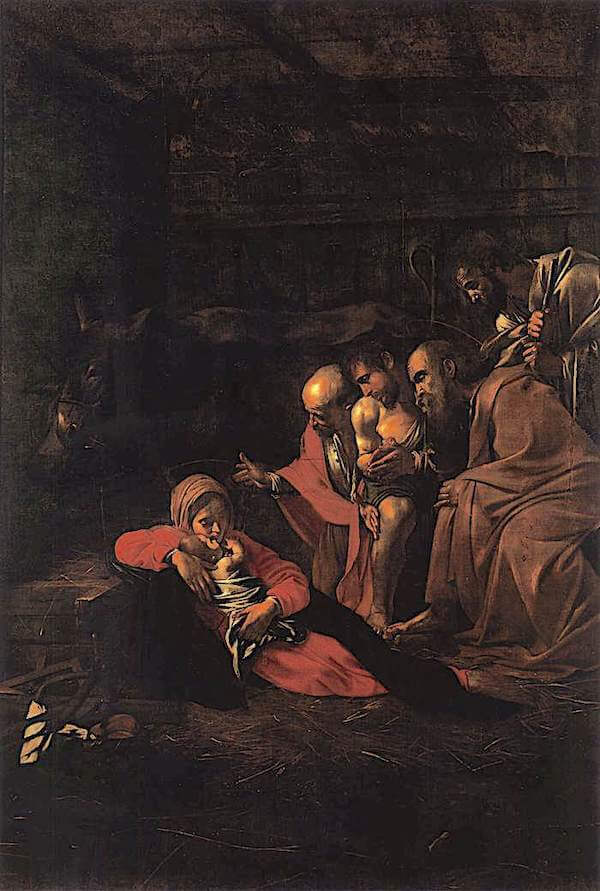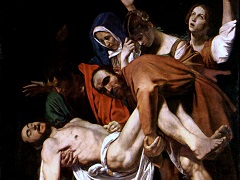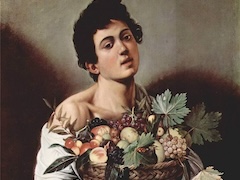The Adoration of the Shepherds, 1609 by Caravaggio

In The Adoration of the Shepherds, the scene is another dark
interior, with a beam of light cutting across from the left, causing
the figures to emerge from the general obscurity. The composition is
ingenious but unobtrusive. Its effect is of restraint, tranquility,
and calm immutability.
Doctrinal implications are understated. Perhaps by seating
the Madonna on the ground Caravaggio was deliberately recalling the
late medieval play on the Latin words "humilitas'' (humility) and
"humus" (earth). But the Madonna's humility speaks for itself. She
is no queen of heaven, but a simple healthy young woman of the
people, cuddling her baby like any other mother. Nor does anything
suggest the shepherds' historical significance as the first men to
recognize Christ. Only the young man in the center makes a prayerful
gesture and even that is equivocal. They may be surprised to find
this mother and her beautiful newborn child in this shack, but their
response is to admire them rather than to venerate the Virgin and
worship Christ.
No cloud of angels bursts in, no great blaze of light
disturbs the tranquility, and accessories are meager and plain. The
basket containing the Holy Family's simple travel necessities - a
loaf of bread, a few pieces of cloth, and Joseph's carpenter's tools
- is unpretentious, and its sparseness emphasizes the family's
simplicity and poverty. Some theological significance might lie
concealed within the other accessories, but they appear primarily as
still-life details. The building is a roughly built farm shed,
evidently not intended for human habitation. The traditional ox and
ass seem to belong in this barn, placidly feeding from the manger.
Nonetheless, the subject, even without the halos marking
Mary and Joseph, is unmistakable. Though unadorned, it lacks none of
its essential earthly components. Caravaggio deliberately avoided
any eloquence within it, as contradicting the homespun authenticity
of the wonder at the miracle of birth. The dignity that he has
recognized in these simple people in this drab setting conveys his
sense of their worth, not primarily as participants in this central
Christian event but as universal goodhearted common folk.
















